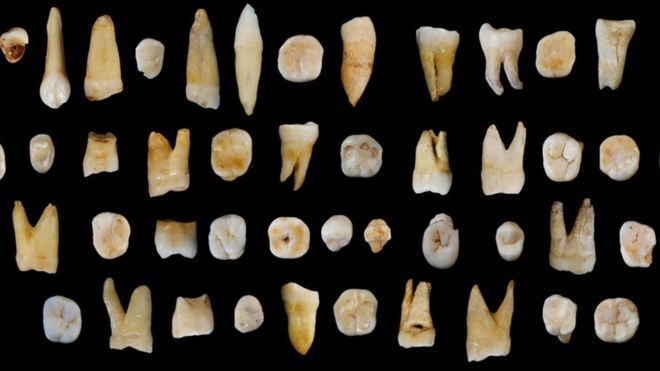Latest studies have discovered 40-odd fossil teeth in China, which may provide new clues of the dispersal routes of modern humans 60,000 years ago, the time that the African fossil teeth were dated at.
The teeth are found by a group of scientists at the Fuyan Cave, which is located in Tangbei Village of Daoxian County, Hunan Province. Hunan Province is in the south-east part of Mainland China, 200 miles away from Hong Kong.
This discovery is so important that the fossil teeth are basically the same as the teeth of Homo sapiens, compared with the Zhoukoudian’s archaeological discoveries in Beijing which shows the teeth of the “early modern human” instead. Homo sapiens, the Latin for wise person, is the scientific name for modern mankind.
According to the figure shown in the journal article, incisors, canine, premolar and molar – the four kinds of teeth that we all normally have, are all found in the archaeological site.
The earliest fossils of Homo sapiens before the discovery in China are found in Africa, contributing to the mainstream theory of the Out-of-Africa model. Described as “a game-changer” by Prof Chris Stringer from London’s Natural History Museum, the latest Fuyan Cave’s evidence is a breakthrough in the theory of human migration. Hypotheses of earlier dispersals are purposed by scientists.
Dr María Martinón-Torres from University College London told BBC that all the fossils have been sealed in a calcitic floor. The layer above that is stalagmites which has been dated to 80,000 years. As the layer below must be older than the stalagmites layer itself, it means that the teeth are at least 80,000 years old.
The teeth can be as old as 125,000 years old, referring to the researchers.
According to the journal article, the studies “fill a chronological and geographical gap that is relevant for understanding when H. sapiens first appeared in southern Asia” and “is important for the study of dispersal routes of modern humans”. It also supports the hypothesis that “southern China was inhabited by more derived populations than central and northern China” at that time.
A researcher from the Chinese Academy of Sciences (CAS) told the Science and Technology Daily of China that the environment of Southern China has been warm and stable for 2 million years, making it a perfect place to search for human fossils. It is regrettable, however, for him that an intact human skull was not found in the cave.
Another researcher from CAS explained that the Fuyan Cave was not a main cave for living. It is believed that this was the tomb of the ancient people.
The journal article was published on “Nature”, the influential British interdisciplinary scientific journal, on 14th October. It was ranked the world’s most cited scientific journal in 2010 with an impact factor of over 40.
Gordon Cheung

